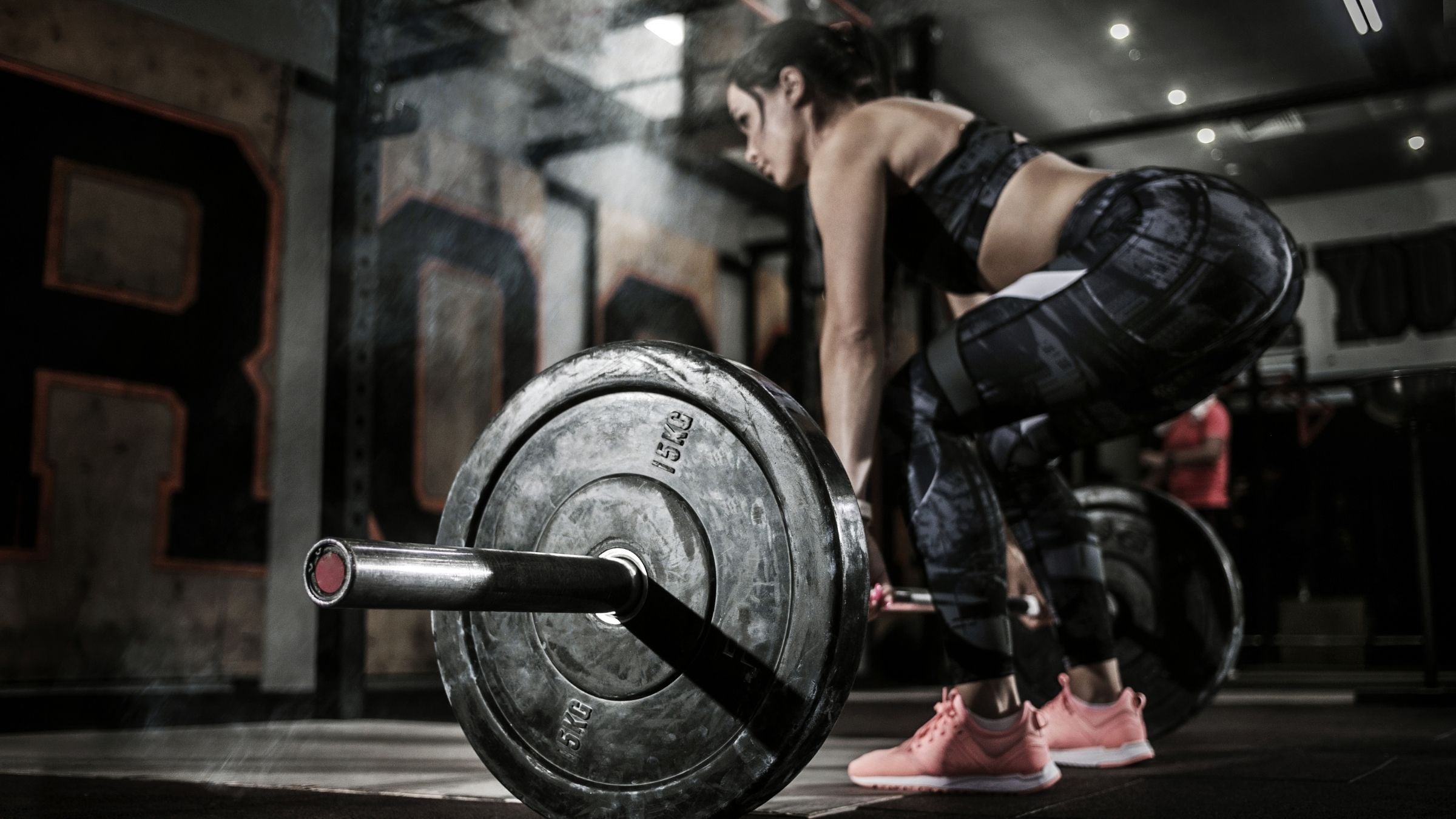Why is Heavy Lifting So Good for Triathletes?

(Photo: Getty Images)
“Lift heavy sh*t” is a phrase I see gaining more and more traction in the endurance world (which delights me no end). It seems that more and more athletes and coaches are bringing heavy lifting into their mainstream training and this makes me so happy to see. Why? Because it offers so many benefits beyond the lift itself.
RELATED: Why (and How) Triathletes Should Lift Heavy Sh*t
First, let’s talk about lifting heavy. There is no specific number of pounds that will constitute “heavy” for everyone. What might be heavy to someone picking up a dumbbell for the first time may not even register as weight for a professional athlete. “Heavy” is just nomenclature for resistance training that is in the low rep range and gets heavier over time. This type of resistance training is geared towards improving strength, not focused on increasing muscle size (hypertrophy)—although you will get both. (Note: it is very difficult for women to “bulk up” especially if the main focus is endurance).
How heavy is heavy?
Training for strength usually involves lifting above 85% of your one-rep max, for a rep range of 1-5 in each set, aiming for four to five sets. The weight for each rep should feel hard, to the point in your last set that you may not reach the full rep range through your full range of (good) movement. The goal of lifting heavy is to improve the neuromuscular connection of muscle contraction, meaning increased recruitment of fibers per contraction to improve the force your muscles can exert. In contrast, hypertrophic training (training to build mass) is geared to induce mechanical damage to muscle fibers and proteins to stimulate a repair response resulting in increased muscle size. This is typically through a high volume (multiple sets of 8-15 reps).
RELATED: The Right Way to Find and Use Your Maximum Lifting Weight
As an endurance athlete, why should you consider lifting heavy? Well, when we discuss strength, we are looking at the ability to generate maximal force through a muscle contraction. This ability to generate maximum levels of force is dependent on a few key factors, such as the central nervous system and rate of force production, which we’ll dive into a little further below:
Central Nervous System: The central nervous system is the control center for all movement and hard training. It’s made up of your brain and spinal cord. When you train heavy, you train the nervous system to withstand heavier loads without inhibiting your ability to train hard (which means less interference with your core triathlon training of swim, bike, and run). The more your nervous system is prepared for heavy loads, the less likely you are to pick something up and feel instantly tired or drained. This is one of the main benefits of strength training and one of the more specific outcomes of heavy training.
Rate of Force Production: Faster rates of force production equate to more force being produced at once, which can help you be more explosive, improving your ability to recover from surges in races, and improve your overall sprinting capacities.
So how does this translate to training?
Strength specific training increases the central nervous system’s ability to send impulses to the muscle fibers to contract. These impulses can improve the rate at which the muscle fiber contracts (rate of force production) as well as how many of them contract at once (firing synchronization). Both of these factors will improve your ability to push bigger gears on the bike, ride and run uphill, and push for the finish line, but most importantly, they will allow you to be more resilient to injury from the high endurance training loads that come with triathlon. The other main benefit to training for strength is that you can maintain or build strength with less time in the weight room, mainly due to the central nervous system being stimulated under heavier loads.
Who should consider lifting heavy?
The answer to that is easy: everyone! But most importantly, as we age, we need to prioritize resistance training. Normal aging is associated with declines in lean mass, muscle strength and function. We also lose bone mineral density (both men and women). Long-time endurance training can exacerbate the decline in lean mass and bone density, due to the chronic catabolic state induced by endurance training and racing (often accompanied by underfueling/low energy availability). Lifting heavy is associated with enhanced anabolic hormonal profiles across the lifespan, differing in the patterns and peaks of hormones as we age. For men, heavy resistance training is associated with higher total and free testosterone and IGF-1 (insulin growth factor-1, a hormone that has an anabolic effect in adults, similar to growth hormone). For women, estradiol, growth hormone, and IGF-1 all increase post-resistance training, both in pre and post-menopausal groups. The boost in these anabolic hormones can counter some of the catabolic effects of endurance exercise (e.g. increased cortisol, increased oxidative stress and inflammation). One other significant bonus for lifting heavy is an increase in the production of brain-derived neurotrophic factor (BDNF), the neurotransmitter related to producing new brain cells and improving cognitive function.
With the benefits of lifting heavy complimenting endurance performance, it is no wonder the chatter of “Lift Heavy $hit” is making the rounds in the endurance space. The next time someone asks you your PR, maybe you answer in pounds, not race times.
RELATED: 5 Common Errors Endurance Athletes Make in Strength Training